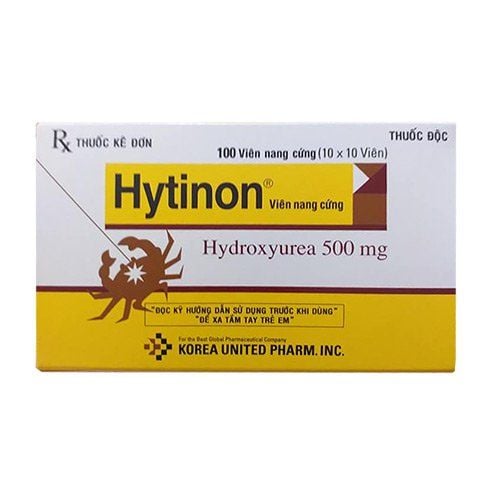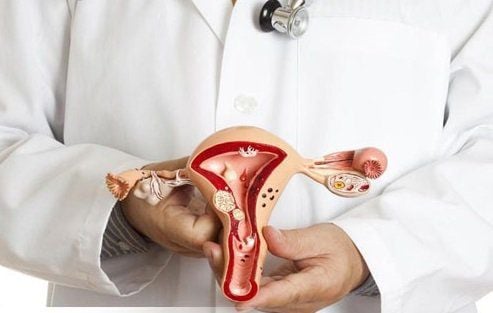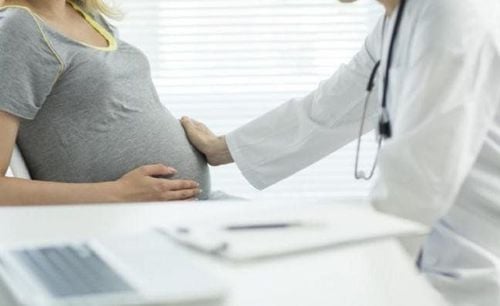This is an automatically translated article.
The article was professionally consulted by Specialist Doctor I Tran Thi Phuong Loan - Obstetrician and Gynecologist - Department of Obstetrics and Gynecology - Vinmec Phu Quoc International General HospitalUterine polyps and uterine fibroids are common gynecological diseases in women. Most uterine polyps are not malignancies. Most uterine polyps do not cause symptoms.
1. What are uterine polyps?
Uterine polyps are small, benign tumors that develop in the uterine cavity. They come from the glandular tissue of the uterus, called the endometrium. That is why they are also called endometrial polyps.The size of uterine polyps can vary. It is possible to have one tumor or multiple uterine polyps at the same time. Most uterine polyps are not malignancies. Most of them cause abnormal bleeding symptoms. Some patients with uterine polyps need immediate treatment. There are many treatments for uterine polyps.
2. Causes of uterine polyps
Currently, the cause of uterine polyps is unknown, however, it may be related to changes in hormone levels. Each month, a woman's estrogen levels rise and fall, and the lining of the uterus thickens and then sheds when it comes to menstruation. It is an overgrowth of the lining that makes up a polyp.
Certain factors can increase the risk of uterine polyps, such as age - uterine polyps usually occur in women between the ages of 40 and 50. It may be due to changes in concentration. Estrogen occurs before and during menopause.
Obesity, high blood pressure, and taking the drug tamoxifen used to treat breast cancer can also increase the risk of uterine polyps.
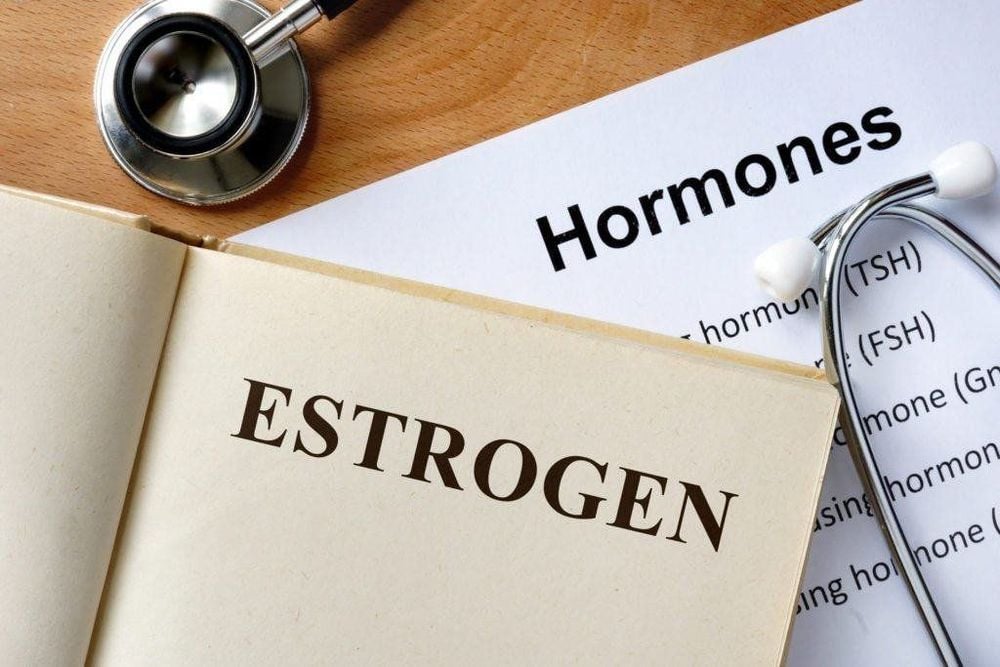
Hormone estrogen có liên quan đến sự hình thành polyp tử cung
3. Signs of uterine polyps
Patients may not see the appearance of any symptoms when having uterine polyps, especially if there is a small polyp or just a tumor. The most common sign in patients with uterine polyps is bleeding.
Some common symptoms of uterine polyps, include:
Irregular menstrual cycles, heavy bleeding, and prolonged period bleeding Bleeding after sex Vaginal bleeding after menopause Effects to fertility Most uterine polyps are not uterine cancer. But a small percentage may progress to cancer later in life. That risk is higher if you go through menopause. The symptoms of polyps are similar to those of uterine cancer, so if you have any of these, you should tell your doctor right away to determine the exact condition.
Uterine polyps can also cause fertility problems. Uterine polyps can make it difficult for you to conceive or make you more likely to have a miscarriage. That's because polyps can keep a fertilized egg from attaching to the lining of the uterus or block a fallopian tube. Some studies have found that removing polyps can help women get pregnant, but there's no clear evidence that it works for everyone.
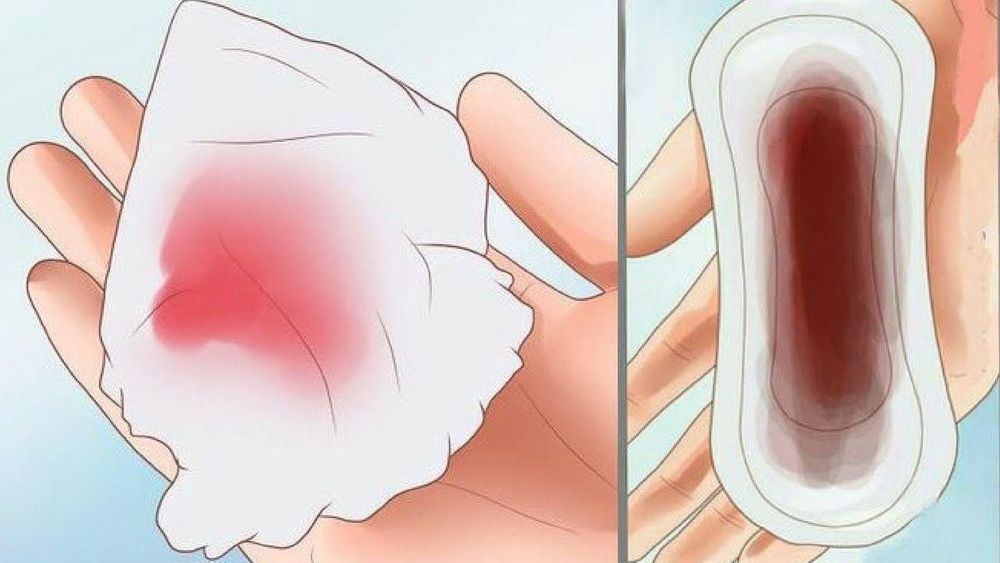
Polyp tử cung gây chảy máu âm đạo sau mãn kinh
4. Diagnosis of uterine polyps
To determine if you have uterine polyps, doctors will have to perform several tests to look deep inside the uterus.
Several methods are used to diagnose uterine polyps, including:
Transvaginal ultrasound: Your doctor places a device into your vagina. It emits sound waves to create a picture of the inside of your uterus. Colposcopy or ultrasound: Your doctor may use this test during a transvaginal ultrasound. Place a thin tube called a catheter inside your vagina and pump saline into your uterus. The fluid expands the uterus and gives the doctor a better look at the inside of the uterus during the ultrasound. Hysteroscopy: The doctor uses supportive instruments such as glasses with a small camera, also called a hysteroscope. It allows the doctor to look at the tissues lining the inside. If polyps are seen, the doctor can use surgical tools to remove them at the same time. Endometrial biopsy: Your doctor will use a soft plastic tool to remove a piece of tissue from the lining of your uterus. A sample of that tissue, called a biopsy, is then sent to a lab to check for cancer cells. Polyp biopsy: The doctor uses a metal instrument with a small ring on one end, called a curette, to remove a piece of polyp or tissue in the uterus for testing. Your doctor may also use a curette to remove uterine polyps.
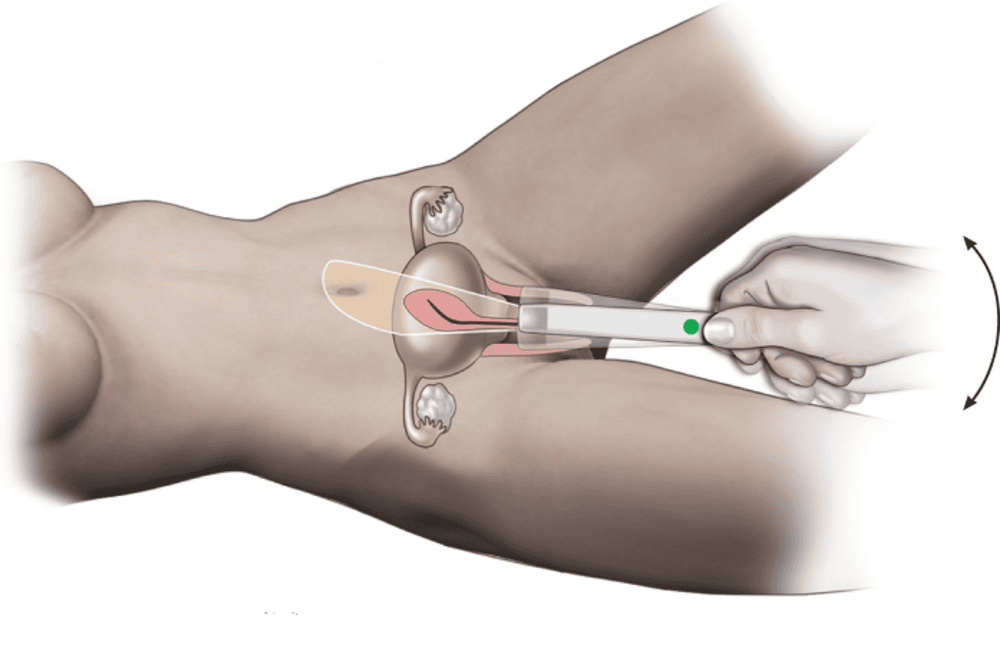
Siêu âm giúp chẩn đoán polyp tử cung
5. Treatment of uterine polyps
You may not need treatment for uterine polyps if they are not causing any symptoms and the polyps are not malignant. In some cases, uterine polyps may disappear. But if you've been through menopause or have certain factors that put you at higher risk of uterine cancer, your doctor will recommend removing your polyps:
Medications: Medications called progestins and agonists gonadotropin-releasing hormone transporter helps control your hormone levels. May shrink polyps and relieve symptoms of the disease, such as heavy bleeding. But these symptoms usually return when you stop taking the medicine. Surgery: Doctors can often remove polyps in the same procedure as they are used to diagnose disease, such as hysteroscopy. Instead of making an incision in your abdomen, your doctor may insert another surgical instrument through your vagina and cervix to remove the polyp. If your polyps have cancerous cells, you may need surgery to completely remove the uterus, called a hysterectomy.
6. Distinguishing uterine polyps and uterine fibroids
Uterine polyps and uterine fibroids have many similarities, such as causes, symptoms... but there are some differences between these two diseases. Fibroids are overgrowth of uterine muscle cells in the uterine wall, not the tissue lining the inside of the uterus. Like polyps, fibroids can cause heavy bleeding, pain, constipation, and difficulty urinating. The same tests can be used to diagnose fibroids and polyps. Depending on the type of disease and the patient's condition, the doctor will recommend an appropriate treatment method.
In order to help customers detect and treat other gynecological diseases early, Vinmec International Hospital has a basic gynecological examination and screening package, helping customers detect early inflammatory diseases Easy, inexpensive treatment. Screening detects gynecological cancer (cervical cancer) early even when there are no symptoms.
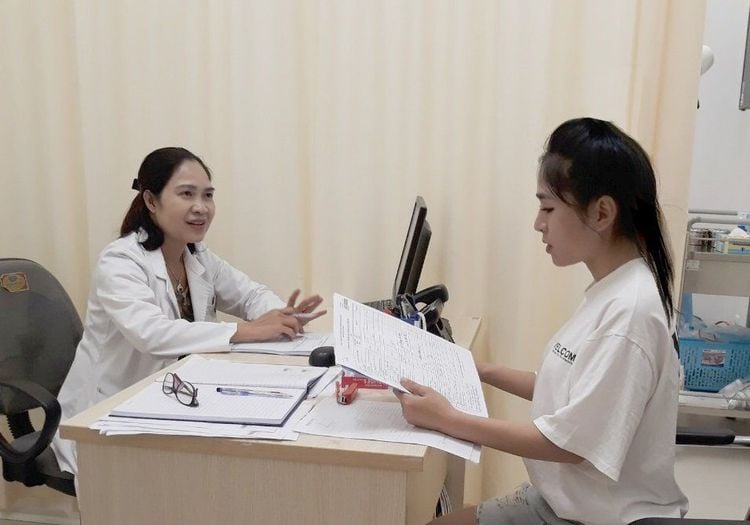
Khám phụ khoa tại Bệnh viện Đa khoa Quốc tế Vinmec
Abnormal vaginal bleeding Menstrual problems: prolonged periods abnormally long, irregular menstrual period Abnormal vaginal discharge (smell, different color) Pain, itching in the intimate area Female customers have several risk factors such as poor personal hygiene, sexual relations unsafe sex, abortion,... Female customers have other symptoms such as: abnormal vaginal discharge, itching, pain in the private area, abnormal vaginal bleeding. To register for examination and treatment at Vinmec International General Hospital, you can contact Vinmec Health System nationwide, or register online HERE.
Reference source: webmd.com
SEE MORE
Cervical polyps and the risk of malignant progression Common diseases of the cervix Laparoscopic removal of uterine fibroids





